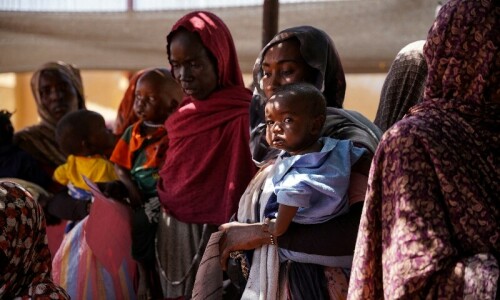ISLAMABAD: An independent consultant hired by the Water and Power Development Authority (Wapda) is of the opinion that desilting of Tarbela dam is not a viable option, either economically or technically, and may damage the country’s largest power house and reservoir.
A senior government official told Dawn on Sunday that Wapda had hired the Chinese consultant to conduct a feasibility study for desilting the Tarbela reservoir to recoup over 30 per cent capacity lost to silting over the years.
One of the world’s largest earth-filled dam was completed in 1978 with World Bank’s assistance under the Indus Water Treaty signed by Pakistan and India. Owing to continuous silting and sedimentation, the dam’s storage capacity declined from 9.6 million acres feet (MAF) to about 6.6 MAF.
The official said the feasibility study concluded that instead of undertaking such a mammoth exercise it would be more economical to build a new dam of the same size and capacity. “The silt and rock deposits in the dam are huge and require massive financing almost equal to the cost of a new dam.”
He said the consultant was of the view the work of breaking rocks and boulders and flushing out silt deposits could damage the infrastructure of the power house and perhaps the dam structure. It would speed up the movement of delta and silt deposits.
The official said the river flows carried to the dam over 500,000 tons of silt annually, resulting in a build-up of over 5 km delta inside the dam’s storage area. Over 25 acres of land in the reservoir has been filled with silt, reducing its storage capacity by over 3 MAF.
A Wapda official confirmed that the Chinese consultant had submitted the technical report and it was currently under examination. He said that initial scrutiny of the report indicated that Wapda would not go for desilting of the dam, adding that the examination of the study pertained to a new project (Tarbela 4th extension) for enhancing power generation capacity of the dam by about 1,400MW.
The official said the dam had an estimated lifespan of 50 years which meant it would complete its designed life by 2029. He, however, said the process of sedimentation had slowed down in recent years which indicated the project might have a useful life of about 85 years i.e. until 2060.
The downside is that Pakistan’s per capita water availability which stood at about 5,100 cubic metres in 1960 had already gone below 975 cubic metres per person — a threshold defining Pakistan among the water-scarce nations.
This was mainly because of the reason that the 1960 treaty required Pakistan to build a dam of the size of Tarbela at least every decade but to the utter failure of planners and governments it could not take up even a single dam in more than four decades after completion of Tarbela.
The Tarbela 4th extension project is being supported by the World Bank to increase the generation capacity of Tarbela power house to about 4,900MW from 3,500MW.
The World Bank has already signed an agreement with the federal government and Wapda to provide about $840m — almost 90 per cent of the cost — for the project which is expected to be completed by 2016 and will be the first major hydropower capacity addition since completion of the 1,450MW Ghazi Barotha project in 2004.
The official said the contract for civil works of the 1,410MW extension project was likely to be awarded in March.
The contract would involve installation of three units of 470MW each at the 4th tunnel of the dam.
The final design report has put the estimated cost of the project at $930m. The remaining amount of Rs18 billion in local currency would be financed by Wapda through its own resources and federal government’s assistance.
The project is part of Wapda’s least-cost power generation strategy aimed at adding a sizeable quantity of electricity to the national grid and improving the ratio of hydel electricity in the overall system to stabilise the power tariff. It was such an economically viable project that it would be completed in four years, accrue annual benefits of about Rs30bn and pay back its cost in three years.















































